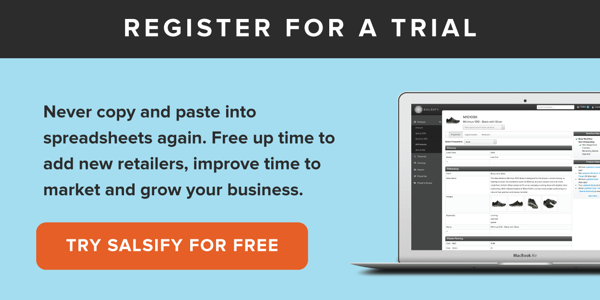Ask an Expert: How a D2C Site Enables Growth

According to our 2018 trend retailer-brand survey, 92% of brand manufacturers are selling direct-to-consumer (D2C), following only marketplaces and social media as priority consumer touchpoints. Selling D2C provides brand manufacturers the opportunity to connect on a deeper level with consumers -- from understanding how content impacts sales, to retargeting across channels to learn more about their overall persona. While online marketplaces like Amazon and Walmart receive well over 50% of ecommerce sales, D2C is expected to grow by 71% over the next few years.So you’re thinking about ramping up your brand’s D2C site but you have mixed priorities for what channels need the most focus and how to maximize efforts to help across channels? This is a common concern, so we sat down with a member of Customer Success team who has helped dozens of D2C brands power their ecommerce sites. Alex Clark, a Principal Implementation Consultant, has worked at Salsify over two years and has seen the impact that D2C can have on brands.
Check out her 5 tips on how a D2C site enables growth:
1. Build Product Information for Syndication
Many brands selling D2C limit themselves to attributes only relevant to their own site -- they aren’t think long term or for syndication. Rather than concentrating on the data set for your own site, focus on the data set for the product category. It is much easier to expand and grow channels when you’ve built your data set for products to be considered for syndication down the road. Brands who aren’t considering this are losing out on an additional opportunity for exposure.
2. Don’t Be Afraid to Test
One of the biggest benefits of selling D2C is the ability to test things, quickly. You are limited to work within the perimeters set by channels when you are selling through a distributor or retailer because it can take a significant amount of time or inhibited by lack of content ownership, but on your own site, don’t be afraid to do A/B testing. Use your D2C site to iterate and understand quickly how your product is doing and use that to further refine product experiences.
If you’re using Salsify to power D2C, use computed properties -- it can be easier than you think to transform your data and map it out. Take advantage of the visibility and content ownership that comes from having the final say--and use that to dictate how your products are resonating with customers.
3. Send D2C Data to Multiple Feeds
If you set your D2C site and send data to Google feeds, can you augment that with Google Shopping, Express or Manufacturing Center? You want to maximize brand awareness, and Google makes it easier for your brand to be visible. Think beyond the importance of the standard benefits of Search Engine Optimization on Google.
4. Optimize for Your End User
When it comes to working with Salsify to launch D2C sites and products, there are a lot of moving parts and people involved in each roll out. Merchandisers and copy writers have their own set of responsibilities, but does your legal team need to be involved? If you spend time in the beginning of implementation working through workflows and orchestrate processed needed for each roll out it, it’ll be easier to launch new products. Thinking of the end user experience and developing trainings makes a significant difference.
5. Showcase the Best of Your Brand
It’s highly likely that your brand is selling on multiple channels aside from your D2C site, and your consumer may be going directly to Walmart or Amazon to search for a product category. Yet, over a third of consumers report buying directly from a brand manufacturer’s website. This means you need to be an ideal channel for the consumer who is cross-referencing or goes directly to your site. It is important to be understand that cross-referencing is become more in tuned with the shopping experience. This provides an opportunity for brand messaging to be unfiltered and to immerse consumers in a product experience crafted by you.
Tag(s):
Omnichannel Commerce Strategy
Written by: Caroline Egan
Caroline Egan (she/her) is a writer and former content marketing manager at Salsify, where she focused on crafting campaigns to drive brand awareness and customer engagement.
Recent Posts
Ecommerce Marketing
|
12 minute read
The Art of the Impulse Buy: 70% of Shoppers Say Discounts Drive Unplanned Purchases — Here’s Why
Read More
Ecommerce Marketing
|
10 minute read
What Does It Take To Have a Good Brand Reputation in 2025?
Read More
Ecommerce Trends
|
11 minute read
What Is Commerce Media — and How Can It Optimize Your Marketing Spend?
Read More
Subscribe to the Below the Fold Newsletter
Standing out on the digital shelf starts with access to the latest industry content. Subscribe to Below the Fold, our monthly content newsletter, and join other commerce leaders.


.svg)